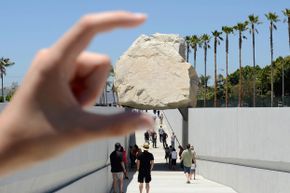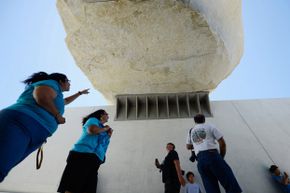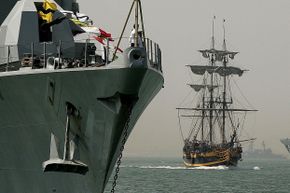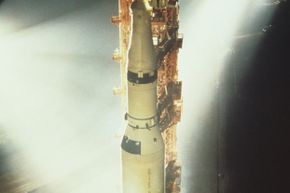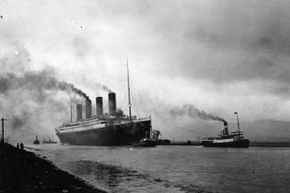In director Werner Herzog's 1982 film "Fitzcarraldo," a European ne'er-do-well (portrayed by Klaus Kinski) dreams of becoming rubber mogul in Peru, and comes up with a bizarre solution for reaching a potentially lucrative, but previously inaccessible, parcel of rubber trees. Fitzcarraldo sails up a river as far as he can go in a giant paddlewheel steamship, and then somehow convinces a crew of natives to drag the 300-ton (272.2-metric-ton) craft up a steep mountainside with ropes and pulleys so that he can get to another nearby river and sail on to his destination. Somehow, they succeed [source: Canby].
In the end, fortune still eludes Fitzcarraldo, but something about his determination and sheer gall resonates with us. After all, if there's a single enduring trait that humans have demonstrated throughout the ages, it's the never-ending desire to move really big, heavy objects that can't move under their own power. We still marvel at how the ancient Egyptians managed to drag 2.5-ton (2.3-metric-ton) blocks of granite for miles and then lift them into place when they built the pyramids, all without modern machinery. (Scientists have determined that they used teams of oxen to pull the stones along a slipway lubricated with oil, and then eased them up ramps built of mud brick and coated with plaster [source: Science Daily].) And we can't help but be impressed at the ingenuity of a contractor named B.C. Miller, who in 1888 jacked up the three-story, 174-room Brighton Beach Hotel and built a small stretch of railroad beneath it, so he could move the structure 600 feet (188.8 meters) inland on flatbed cars to protect it from beach erosion [sources: Boston Evening Transcript, Brooklyn Public Library]. Today, we'll fill a stadium to watch a monster truck-pulling contest.
Advertisement
Here's the lowdown on 10 of the heaviest objects that humans have ever relocated.
